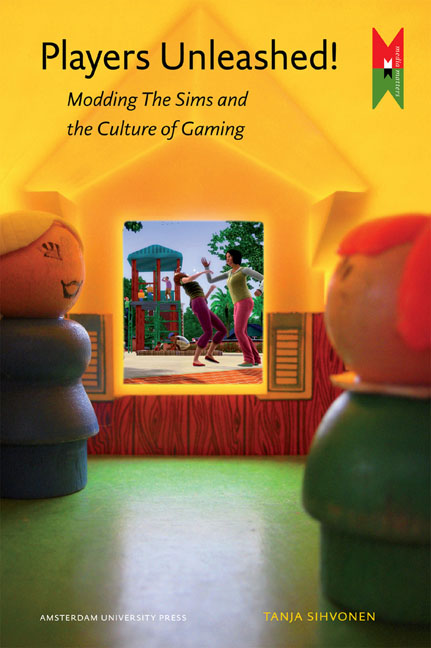II - Cultural and Commercial Appropriation
Published online by Cambridge University Press: 22 January 2021
Summary
Modding and participatory culture
In principle, modding can be defined in one simple and straightforward sentence: it is the activity of creating and adding of custom-created content, mods, short for modifications, by players to existing (commercial) computer games. These additions can be supplementary – in which case the mod is called a partial conversion – or mods can result in an entirely new game, which is then called a total conversion (TC). For instance, games like Quake and Ultima provide their players with flexible game engines that allow them to turn the original FPS into almost any type of game, from driving games to architectural walkthroughs (Ondrejka 2003, 8). Typical modded elements are characters, enemies, weapons, levels, textures, music and gameplay modes, and they can be added to both single- and multiplayer games. The mod-friendliness or ‘moddability’ of a game can be determined by, for example, its incorporation of gameplay variable definitions in text or other non-proprietary format files. Modding graphical elements depends on whether they are available in standard formats such as bitmaps (bmps). The modular anatomy of computer game modding is, in principle, based on the twofold architecture of game software: there is the game engine (or engines), and there are libraries containing all the data objects out of which the engine creates the game in real time as it is played. Normally, the engine remains out of the range of the player, but data in the libraries can be tinkered with. This aspect makes (certain parts of the) games moddable (Knorr 2007, 3-4).
In practice, however, game modding consists of a multitude of convoluted, sophisticated and overlapping activities that are not easily distinguishable or categorisable. Despite this complexity – and because of it – all kinds of practices associated with modding so far have in research been customarily grouped under one broad heading such as ‘addition’ (Aarseth 1997) or ‘creative construction’ of new game elements (Raessens 2005, 373). However, as the discussion of ‘reconfigurative’ (Raessens 2005) or ‘transformative’ (Sotamaa 2007) play suggests, there are numerous possibilities for the player to alter either the game-as-product or the game-as-process, both within the given ruleset and against it, as well as on the metalevel of gaming itself.
- Type
- Chapter
- Information
- Players Unleashed!Modding The Sims and the Culture of Gaming, pp. 37 - 86Publisher: Amsterdam University PressPrint publication year: 2012



